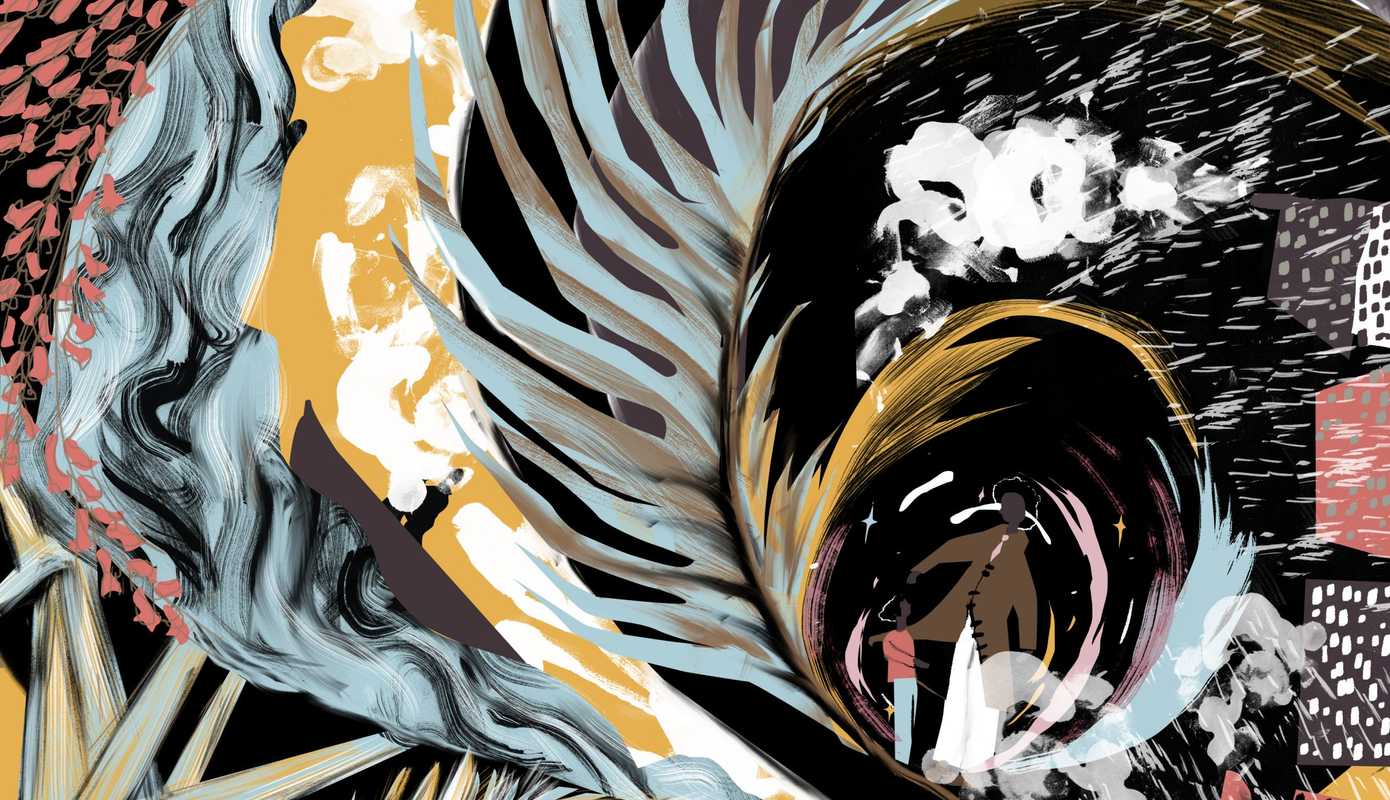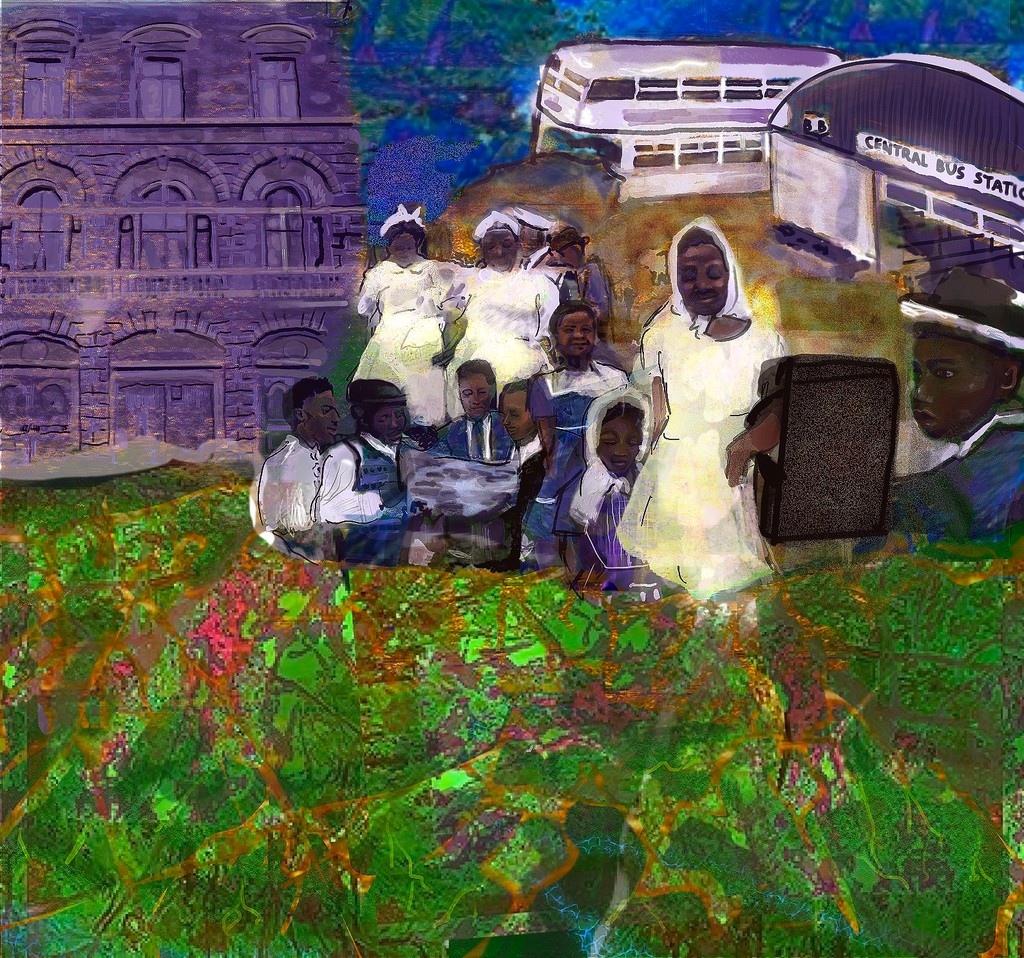This article is part of LOCAL, a season celebrating community support structures in Sheffield, Birmingham and London.
The Lady’s Bridge, Sheffield’s oldest bridge, is a crossing which connects cultures, transporting pedestrians from the bustling, commercialised metropolis of Haymarket, over the River Don, to the slower-paced Wicker. Once across the bridge, you can make a quick stop at Martin’s, an African and Caribbean store – the scent of cured fish lingering long after you emerge with weighted bags of ripened plantain. You can walk past the barbers that boast Afro hairstyles in faded window displays, past the kebab shops serving potato wedges deep fried yet fluffy, and there you will see the grand SADACCA building, a three-story community centre towering proudly over the Wicker.
Originally founded in 1955 by first generation community members under the name of the ‘West Indies Association’, the centre was created to meet the social, familial and community needs of Sheffield’s growing African and Caribbean population. Formally constituted as The Sheffield and District African-Caribbean Community Association (SADACCA) in 1986, it has since become a multi-use space that can offer everything from a boxing club to a recording studio, a hair salon to a library, a cafe to a healthcare centre – all for community use.
As SADACCA chairman Rob Cotterell showed me around the vast Victorian brick building, he told me about one of the centre’s most recent projects. The Bantu Archive Programme, in partnership with The University of Sheffield, is a digital and physical exhibition documenting the history, heritage, and journey of Sheffield’s African and Caribbean community through oral storytelling. “The initial idea was for us to be able to tell our stories in our way with the passion and nostalgia befitting,” Rob tells me. He says the word Bantu, meaning ‘people’ in many central and southern African languages, was intentionally chosen instead of ‘Black’ in order to reframe how the project considers those at its core. “We’re not reclaiming our history, we’re reimposing our history,” Rob emphasises, implying an act of defiance that does not require permission.
Comprised of in-depth interviews with twelve participants (so far), the archive represents a journey through Sheffield’s history: from the legacy of slavery which can still be traced through the names of our streets, steel industries and buildings, to the visits of Fredrick Douglas and Malcom X in 1846 and 1964 respectively, or how Sheffield became the first City of Sanctuary for refugees in 2007. Through The Bantu Archive Programme, we hear how these political histories have translated into the personal lived experiences of Sheffield’s African and Caribbean communities.
Woven throughout many of these life stories is SADACCA. As archive contributor Cora describes, the community centre has been a place for christenings, Saturday schools, Saturday night dances, student projects, weddings, activities for the elderly, and funerals. “It’s seen a lot of people grow up, pass through SADACCA, and [go] on their way successful,” she says.
Arrivals, Grace Lee (2021)
Cora came to England from Jamaica in 1957, and hers is among the stories that inspired multidisciplinary artist and producer Grace Lee to create Arrivals, one of three original artworks commissioned to visualise SADACCA’s oral archive. “The only thing we knew about England at that time was that it was the ‘motherland’… where the streets were paved with gold,” Cora says in her interview. “Not that it was very welcoming of course.” In her piece, Grace explores this fantasy of gold-paved streets, the promise of opportunity that England held for new arrivals, which surfaces several times throughout the archive. “The more you uncover the history and the contribution that many of these people made to Britain, I see it as the other way around,” Grace says in her artist’s voicenote. “These brave new arrivals, who weren’t always appreciated, brought so much value in restoring and rebuilding Britain particularly after the war.” The SADACCA building stands like a beacon above the hopeful new arrivals, welcoming them to rolling green hills threaded with gold veins.
No Matter Where You Go, No Matter Where You Roam, Ashley Holmes (2021)
For his experimental film and sound piece No Matter Where You Go, No Matter Where You Roam, Ashley Holmes explores the social lives of the archive contributors. “There’s something in all of these different snippets that I was really drawn to,” Ashley says in his artist’s voicenote, “in that people came together in so many different ways but often it centred around music, or centred around nighttime spaces.” Thinking about the connection of memory to place, he travelled around Sheffield taking photos and audio field recordings in the locations where music venues mentioned in the archive – like Shades on Ecclesall Road, or Maximillions on Charter Square – had once existed. In the process of collecting and storing the images and sounds, the film pays homage to the work of archiving.
The film takes its title from the 1973 song ‘In The Dark’ by Toots and the Maytals, which Ashley inherited as a 7” vinyl from his grandfather’s music collection. Lyrics from the track are spoken over the photos and audio recordings, which are manipulated and distorted to have the hazy, emotive quality of memories, or stories passed from person to person, down the generations.
Watch Ashley’s video fullscreen.
Cora, Tomekah George (2021)
For her piece, illustrator Tomekah George responds to accounts of Windrush arrivals who came to England very young, joining family members who had journeyed ahead. “It was the first time I’d heard about this journey from a child’s perspective,” Tomekah says in her voicenote. Archive contributor Audrey, who arrived as a child in 1966, speaks of the first time she saw Sheffield’s rows and rows of brown brick houses with smoke billowing from chimneys, believing them to be factories. But Tomekah’s piece focuses on a memory that Cora shares from the moment she stepped off the plane from Jamaica at age nine: being immediately swallowed up in the warm embrace of the new duffle coat her father had bought her.
In Cora, Tomekah conveys two worlds meeting, spiralling from comfort to new experiences. Dark industrial Sheffield, bright luscious Jamaica and a boat crossing the ocean swirl around the tiny figure of Cora, whose father is waiting for her at the centre of this overwhelming moment of change.
Each of these new artworks demonstrate the potential in archives like this one, showing how the stories held within community spaces like SADACCA can inspire future generations – if, of course, we capture and share them. Through The Bantu Archive Programme, SADACCA exemplifies what an inclusive, accessible, intergenerational and needs-based approach to community work can achieve. “There is often a beauty in oral histories remaining unrecorded yet living on in the memories of our ancestors,” Rob tells me. “Other times, our stories deserve to be told.”
Over the years SADACCA has overcome multiple threats to closure – from burned-down premises to facing bankruptcy – and if not for the tenacity of its members, these stories may have been lost. In the face of erasure, the archive is a defiant statement of belonging, of claiming space, of saying: we were here.
And we are here still. Mr Allen has lived in Sheffield since 1956. “Like many others, we came here as single individuals, and now I have more than a family in Sheffield. My own immediate family is enough to complete a street,” he says. “Plus the people that we integrate with, work with… We make Sheffield what it is today.”
This season of storytelling took place over six months, across three cities and involved over 40 contributors. We believe that our communities’ stories deserve this level of care, time and attention. If you agree, become a Skin Deep member and support us with a small monthly donation.
Many thanks to the archive contributors for sharing their stories, and to SADACCA and University of Sheffield’s Live Works unit for collecting them. Thanks to Rob Cotterell and Olivier Tsemo, chairs of SADACCA, and Alex Mason at the University of Sheffield.
Mac Lannaman, Ella and Alicia Barrett, and Janice Azu did the initial interviews for the archive. Dr Rosie Knight secured the funding for the project alongside Live Projects at University of Sheffield.
We highly recommend that you listen to more from the Bantu Archive Programme.
Grace Lee is a freelance artist, designer and illustrator from Sheffield. Website / Instagram
Ashley Holmes is a multidisciplinary artist based in Sheffield working between sound, video, radio broadcasts and performance. Website / Instagram
Tomekah George is an illustrator based in Sheffield. Website / Instagram
Evie Muir is a Sheffield-based journalist, domestic abuse specialist, and founder of Peaks of Colour. Website / Twitter





